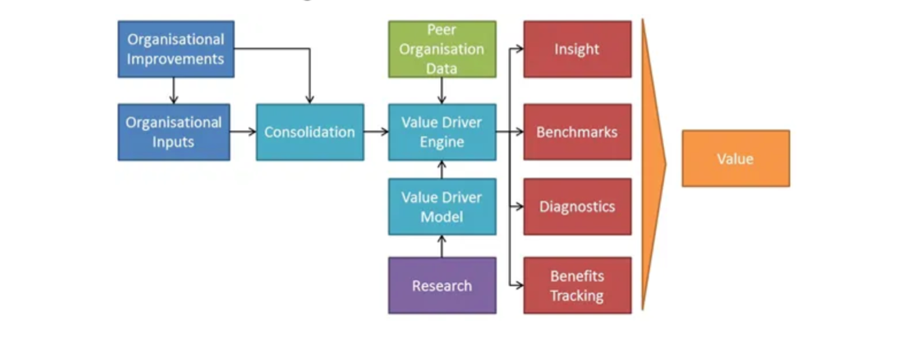There are 5 valuable outputs of using a value-driver psychological assessment tool but let’s start with by bursting the myth that it’s impossible to measure the financial value of all HR-focused projects.
While there may be exceptions like reducing annual leave liability or reducing insurance premiums, overall HR projects fail to have a real dollar benefit associated with them. Often this means that the HR projects are approved because decision-makers intuitively feel that there will be benefits but they do not believe in the actual business case.
Instead of using intuition to approve HR projects, you can use Value Driver Modelling (VDM) to assess the real financial benefit of a project. Using a VDM-based tool, like the Value-Driver Psychological Assessment Tool (VD-PAT), you can specifically assess which parts of the project are going to affect which areas of the organisation and so in turn make an assessment as to the financial improvement possible from the project. Not only does this allow you to assess the value of the project by itself, but you can also assess the value across a whole portfolio of interrelated projects.
You’ll remember the ‘inputs’ part of this diagram in How to get the right inputs into a value driver psychological assessment tool. The diagram below provides an overview of how information flows into and through a VD-PAT:

1. Insight
Insight is the culmination of the value available through all the outputs of the tool. Specifically, insight takes the current state of the organisation and identifies a portfolio of improvements and strategies that match the organisation’s need. Additionally, it also produces a thorough business case based on the costs of implementation and the resulting benefits expected from the change.
2. Benchmarks
The engine can benchmark the relative performance of the organisation against peers in the same sector or geography or compare them against the entire population of data available to the tool.
3. Diagnostics
Results can be used to define the nature of the organisation allowing decision-makers to understand the main factors currently contributing or detracting from the organisation’s performance. Results can also be used to compare different organisational units to understand what contextual or psychological factors are impacting their relative performance. Lastly, results can be used to reinforce or dismiss anecdotal theories describing what is affecting the organisation’s performance.
4. Benefits Tracking
When a change has occurred in an organisation to improve its performance, the resulting change can be compared to baseline figures as well as tracked overtime. This can provide evidence as to the success of the improvement, or act as an early warning that additional intervention is required to ensure that the improvement meets its expected improvement goals.
5. Value
Ultimately, the purpose of the tool is to equip decision-makers with the information and insight they require to improve how the organisation performs.
Reuben Kearney is part owner of Reign Makers Capital, a specialist management consulting firm focused on helping their clients improve their performance using facts. His blogs cover topics related to value driver tree modelling, agile improvement, project management and workforce analytics.

